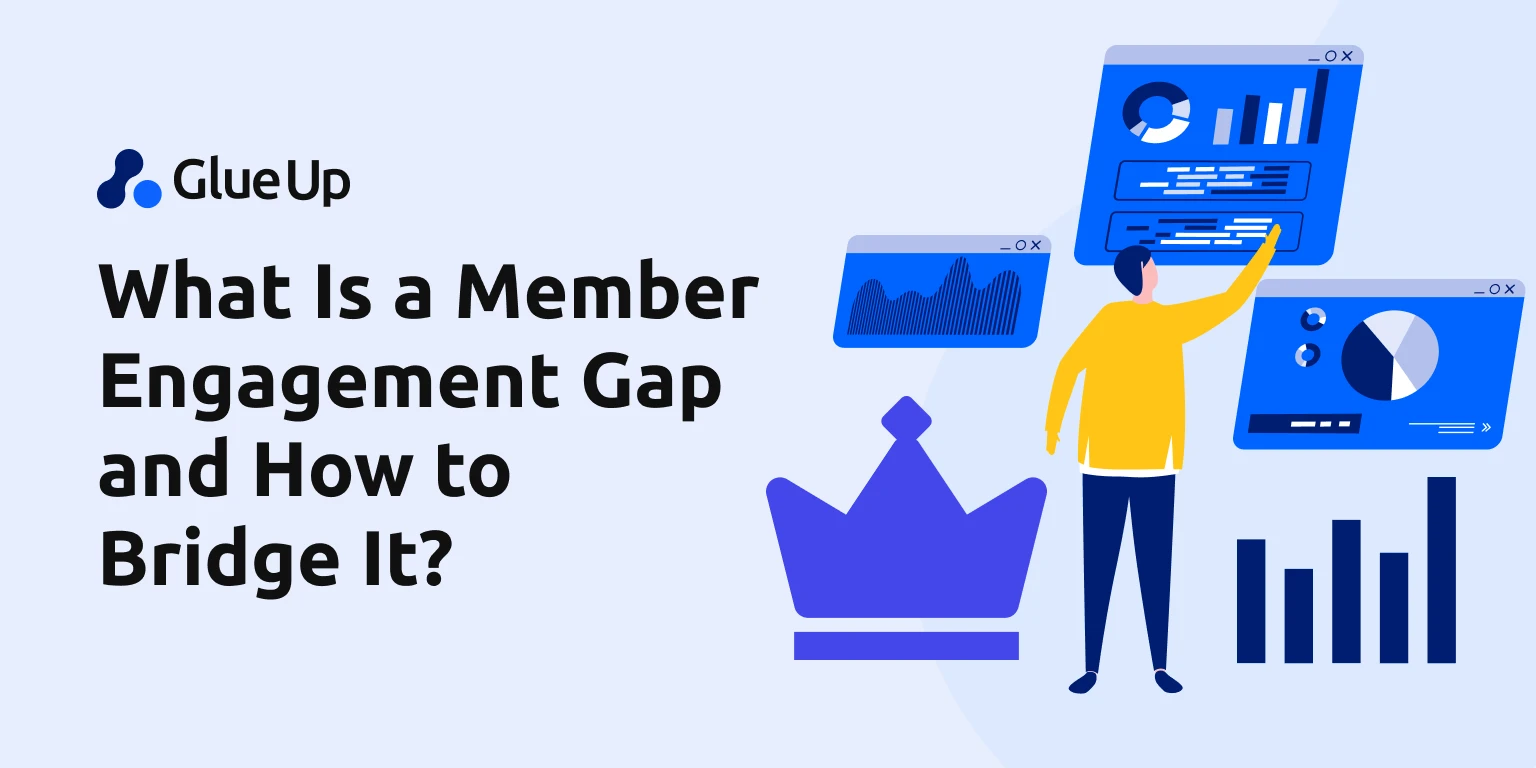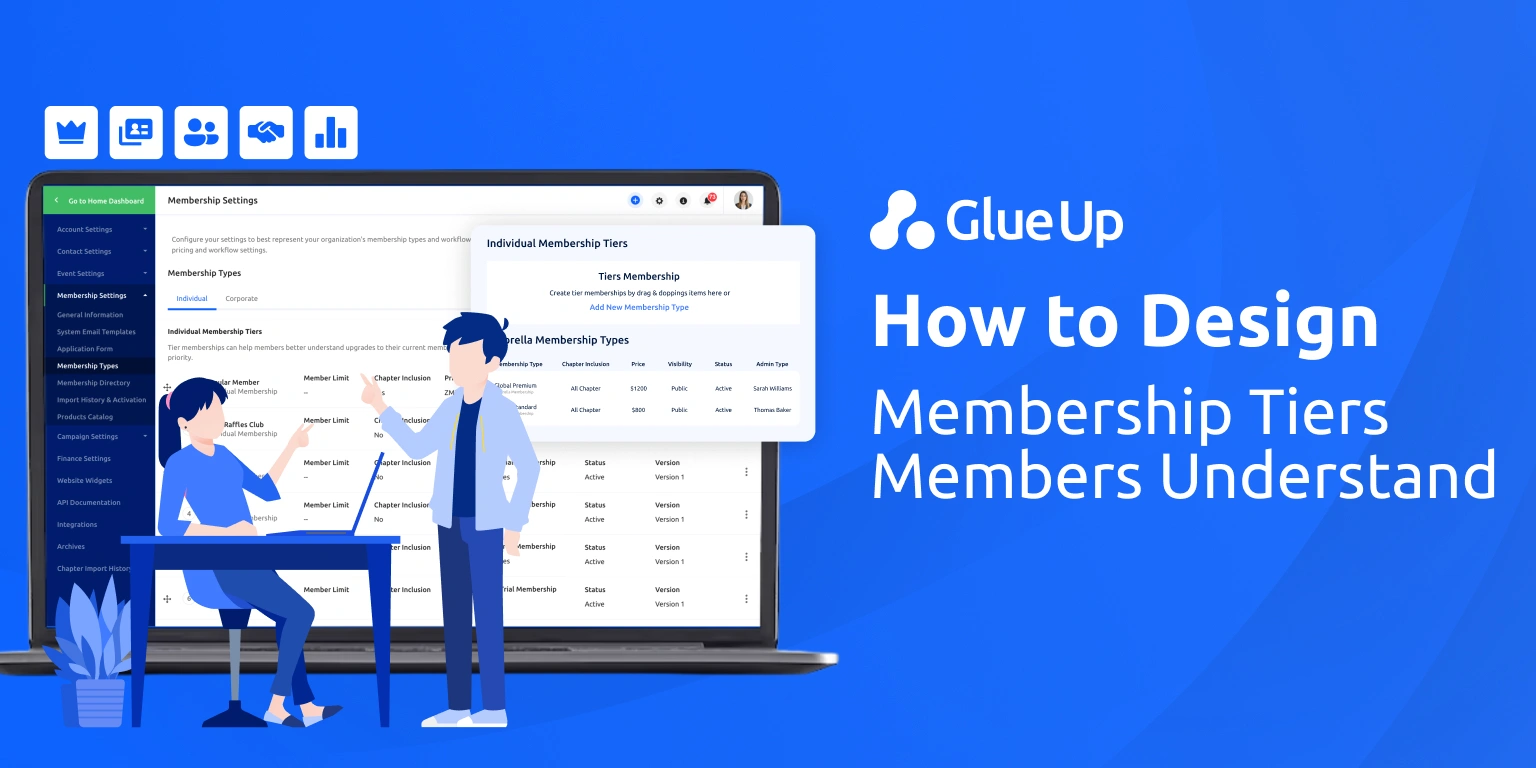
If you are striving to provide value to your members, you may often face a challenge known as the Member Engagement Gap. This concept, while not new, has gained renewed importance in an era where digital connectivity and changing member expectations are reshaping how associations operate.
In this article, we'll explore what the member engagement gap is, why it matters, and most importantly, how you can bridge this gap to foster stronger, more vibrant communities.
Key Takeaways
- The Member Engagement Gap is the period between when a new member joins an association and when they begin to experience the full value of their membership. Bridging this gap is crucial for member satisfaction, retention, and overall organizational success.
- Developing a robust onboarding process for the first 30-90 days is critical. This should include personal welcomes, clear benefit roadmaps, introductions to key staff, and guidance on getting involved.
- Creating immediate value for new members is essential, as long-term benefits may take time to materialize. This can include exclusive content access, event invitations, or welcome packages with tangible benefits.
- Technology plays a crucial role in bridging the engagement gap. Associations can leverage association management software (AMS) to streamline onboarding, facilitate personalized engagement, and track engagement metrics.
- Bridging the member engagement gap requires balancing innovation with traditional tactics. Associations should leverage their established strengths (brand loyalty, history, networks) while embracing new approaches to engagement to meet changing member needs and expectations.
Understanding the Member Engagement Gap
The member engagement gap can be described as the period between when a new member joins an association and when they begin to experience the full value of their membership.
During this time, new members may struggle to find their footing within the organization, unsure of how to best utilize their benefits or connect with the community. This gap can lead to decreased satisfaction, lower renewal rates, and missed opportunities for both the member and the association.
Robbie Kellman Baxter, a Silicon Valley business consultant and author of "The Membership Economy," highlights the importance of addressing this gap. She notes that while many of the best benefits of joining an association accrue over time, new members need immediate reasons to engage.
This presents a challenge for associations: how to bridge the period between joining and when long-term membership benefits begin to materialize.
Why Bridging Member Engagement Gap is Important?

Bridging the member engagement gap is not just about improving retention rates.
It's more focused on creating a thriving, active membership base that contributes to the association's goals and mission.
This is because engaged members are more likely to:
- Renew their memberships
- Participate in events and programs
- Volunteer for leadership roles
- Advocate for the association's causes
- Refer new members
Once you start focusing on bridging the member engagement gap, it allows you to create a positive feedback loop that strengthens the organization and enhances the value proposition for all members.
Key Strategies for Bridging the Member Engagement Gap
1. Understand Your Best Members

Identify the habits and behaviors of your most engaged, loyal members.
As Robbie Kellman Baxter notes, "You want your new members to have the habits of your best members. That's the goal. And so, hopefully, you know what those habits are of your best members, and you want to create incentives for the new members to learn those habits"
2. Develop a Robust Onboarding Process
The first 30 to 90 days of membership are critical for setting the tone and establishing engagement habits.
Sheri Jacobs, FASAE, CAE, urges associations to "create at least one meaningful interaction with every new member during the first 90 days," arguing that most new members will base their renewal decision on this first impression.
Thus, make sure to create a comprehensive onboarding process that:
- Welcomes new members personally
- Provides a clear roadmap of benefits and how to access them
- Introduces key staff members and volunteer leaders
- Offers guidance on how to get involved in various aspects of the association
3. Create Immediate Value

While long-term benefits may take time to materialize, you can provide immediate value to your new members.
It's imperative to engage them during the critical onboarding period, as it takes time for them to establish habits and see the full benefits of membership. You must "come up with some other way to get them involved in the early stages before they begin to experience the authentic value of the membership."
This immediate value could include:
- Access to exclusive content or resources
- Invitations to new member orientation events
- Complimentary registration to a webinar or local chapter meeting
- A welcome package with tangible benefits or resources
You can also employ tactics like gamification to encourage desired behaviors and provide immediate incentives.
4. Reduce Friction and Create Stepping Stones
Remove barriers to engagement and create clear pathways for your members to progress from low- to high-value involvement.
C. David Gammel, CAE, emphasizes that you need to find and fix gaps in your engagement curves to prevent members from becoming "trapped" due to a lack of easy paths for continued engagement.
To achieve this, you should:
- Deliver tangible value at every stage of your member's journey.
- Offer a variety of engagement opportunities to suit different levels of commitment:
- Micro-volunteering opportunities for those with limited time.
- Task forces or committees focused on specific, short-term projects.
- Leadership pipeline programs to nurture future leaders in your association.
- Opportunities for members to contribute content or expertise.
These steps would allow you to have clear stepping stones to progress from low- to high-value engagement, reducing friction and enhancing overall involvement in your association.
5. Focus on Meaningful Interactions
Sheri Jacobs stresses the importance of creating at least one meaningful interaction with every new member during their first 90 days.
These interactions should:
- Be related to the member's reason for joining
- Provide tangible value or solve a problem
- Demonstrate the association's commitment to the member's success
- Encourage further engagement with the association
Jacobs stresses that the "meaningful interaction" should ideally be connected to the member's motivation for joining, rather than what the association might most want the member to do.
This approach ensures that the interaction is relevant and valuable to the new member, increasing the likelihood of their continued engagement and satisfaction with the association.
6. Measure and Optimize
Continuously track member engagement metrics and identify gaps in your engagement curve. You will know the gaps in your curve largely by identifying programs, products, or services from which few people tend to progress.
Experiment with new tactics and optimize your approach based on data.
The Role of Technology in Bridging the Gap
Technology plays an increasingly crucial role in bridging the engagement gap.
While the fundamental principles of providing value and fostering community remain essential, you can learn from other companies that have successfully leveraged technology to create engaging membership experiences.
Consider how platforms like LinkedIn use a "Profile Strength" indicator to encourage users to complete their profiles, or how Quora awards points for asking and answering questions. You can adapt these concepts to your digital platforms, creating interactive experiences that guide your new members toward desired behaviors and engagement.
In your search to address the member engagement gap, you might want to explore association management software (AMS) solutions.
Platforms like Glue Up offer comprehensive tools that can help you integrate various aspects of your association management, including membership databases, event management, communication tools, and engagement tracking.
With these technological solutions, you can:
- Streamline your onboarding processes: Implement automated welcome emails, personalized content recommendations, and step-by-step guides to help your new members navigate their benefits more effectively.
- Facilitate personalized engagement: Leverage data analytics to tailor your communications and offerings to individual member preferences and behaviors.
- Use Powerful AI Features: Leverage advanced AI Copilot for events, emails, and survey creations.
- Create online communities: Utilize community management apps and networking features to foster connections among your members, even in a digital environment.
- Track engagement metrics: Use robust analytics tools to monitor member activity, identify engagement trends, and make data-driven decisions to improve your strategies.
How to Balance Innovation and Traditional Tactics to Boost Member Engagement
As you work to bridge the member engagement gap, you must strike a balance between innovation and tradition.
Remember, while you may face challenges as a startup, your association has significant advantages:
- A strong, established brand that has evolved over time
- Deep loyalty from long-time members
- Rich history and extensive industry knowledge
- Established networks and communities
Your key is to leverage these strengths while embracing new approaches to engagement.
Glue Up’s AI-powered AMS can help you maintain your traditional values and practices while incorporating innovative engagement strategies.
For instance, you can configure Glue Up to reflect your association's unique branding and culture, ensuring that technological advancements complement rather than replace your established traditions.
By combining the best of both worlds, you can create compelling member experiences that resonate with both your new and long-time members. This approach allows you to honor your heritage while adapting to the changing needs and expectations of your membership base.
Conclusion: Member Engagement is a Continuous Journey
Remember that bridging the member engagement gap is not a one-time effort but a continuous journey of improvement and adaptation. As your members' needs and expectations evolve, so too must your engagement strategies.
By focusing on creating immediate value, fostering community, and leveraging technology, you can transform your new members into engaged, long-term supporters of your mission.
To explore how technology can help you bridge the member engagement gap, consider scheduling a demo with Glue Up and get valuable insights into how modern software solutions can enhance your engagement strategies and streamline your operations.



